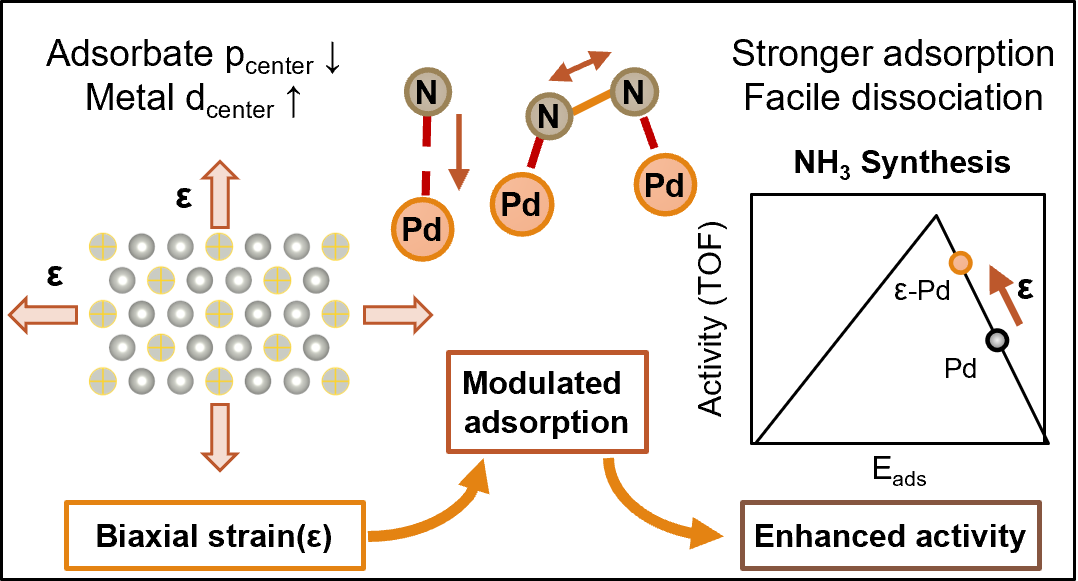Strain has been shown to modulate adsorption and reactions on metal surfaces. While its effect on surface-adsorbate interactions has been rationalized, an understanding of the electronic factors that drive these interactions and their consequences on catalytic activity is lacking. In this work, we use
ab initio density functional theory (DFT) and microkinetic modeling (MKM) to develop electronic descriptors that govern the effect of biaxial strain in the modulation of interactions between adsorbates and transition states (TS) with the catalyst surface and report its significance in tuning the activity of Pd-based catalysts. First, tensile strain enhances the activity of Pd(111) in the synthesis of ammonia (NH
3). Over a net 4% tensile strain (±2%), the d
center of Pd(111) moved upward by 0.21 eV, reducing the barrier for N
2 dissociation, the rate-determining step in NH
3 synthesis. The p
center of N bound to Pd(111) moved downward in the adsorbed state and upward in the TS (i.e., electron density shifted toward the bonding and anti-bonding states, respectively). Thus, tensile strain played a dual role in enhancing N
2 dissociation, strengthening the adsorption of atomic N and weakening the N-N bond in the TS. At 3/4 ML H-coverage, the effect of strain on N
2 dissociation was nearly two orders of magnitude greater than the clean surface due to the compounding effect of strain on the co-adsorbates. Second, compressive strain improved the DFT selectivity of ethylene over Pd(111) in acetylene semi-hydrogenation. Specifically, ethylene adsorption was weakened while its hydrogenation barrier remained nearly constant, increasing ethylene selectivity at high conversion. Compressive strain also improved the activity of the highly selective acetylene semi-hydrogenation catalyst PdZn(110) by thermodynamically favoring H
2 activation. Overall, this work uses electronic descriptors to elucidate the modulation of adsorbate-surface interactions under strain and highlights strain as a general design tool to tune catalytic activity.


